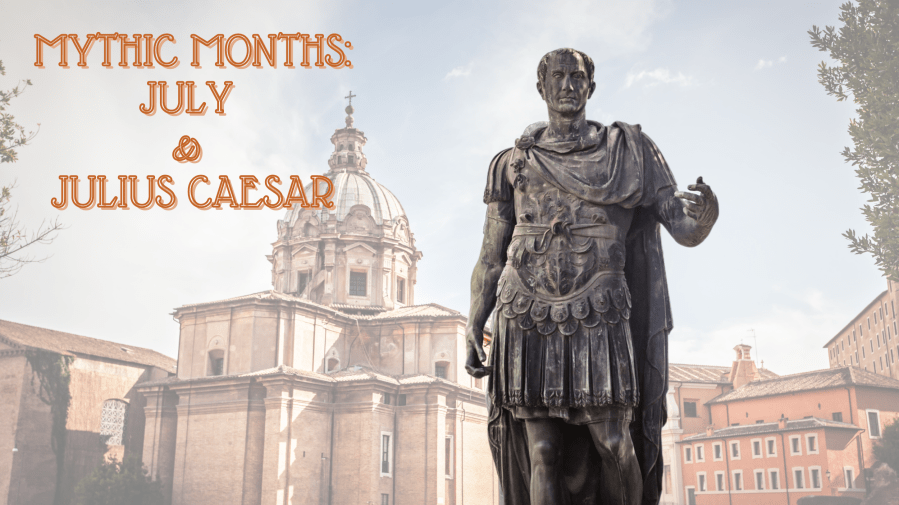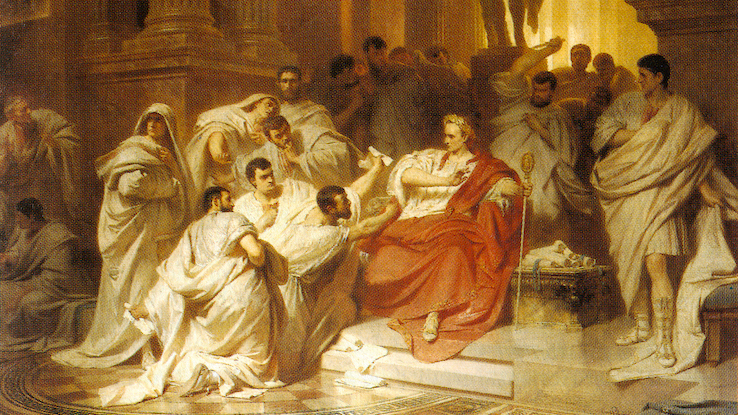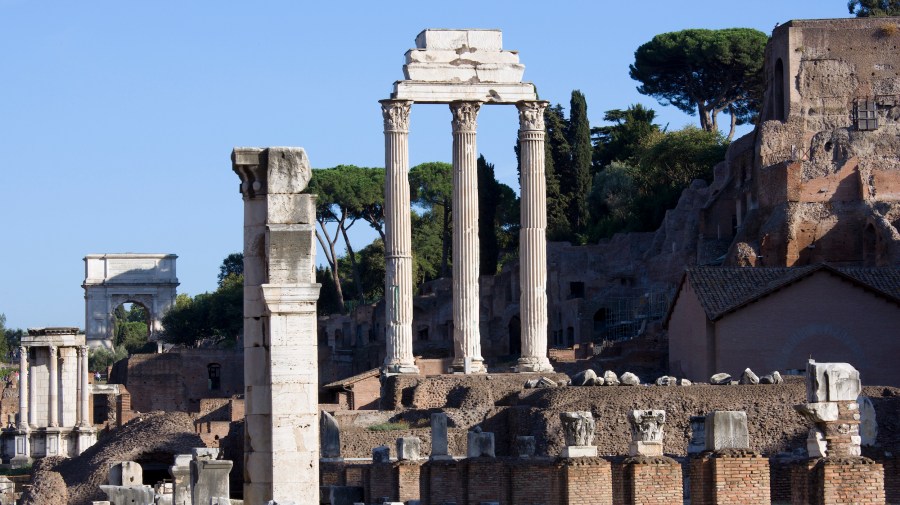Mythic Months: Why Is July Named After Julius Caesar?

June may be the month of weddings, but did you know it’s considered bad luck to wed in the month of July? As an old anonymous saying goes, “Those who in July do wed, must labour for their daily bread.” But it’s not just wedding superstitions that make July stand out as a month of strange omens. Many other sayings and folkloric beliefs about July have developed throughout history — including the warning to “never trust a July sky” and the idea that if July and August “do not boil” then the month of September should bring cooler weather.
But where do these ideas come from, and why have they persisted? Throughout our Mythic Months series, we highlight the stories behind the various gods, rulers and legends of each month of the year and detail the ways they influence our lives today. Here, we’re delving into the ancient origins of July, which was named after Julius Caesar, the ill-fated statesman of ancient Rome.
The Origins of July’s Name
Doomed weddings and weird weather aside, July’s name comes from a famous historical figure: Gaius Julius Caesar. The month of July was originally named “Quintilus” — from “mensis quintilus,” meaning “fifth month” in Latin — because March was the first month of the year in the ancient Roman calendar. After a rebellion in 154 B.C., the Roman Senate was forced to make January the first month, which made what we now call July the seventh month.
After Caesar’s assassination in 44 B.C., the Roman people wanted to change the name of the month “Quintilus.” It was a sensible request, given that the month had become the seventh of the year. To appease the people, the Roman Senate changed the month’s name to “mensis iulius,” which means “month of Julius.” Today we know this month as July, a name honoring Julius Caesar.
Caesar’s Role in Society and the Lives of Romans
Gaius Julius Caesar was born into an influential Roman family on July 12, 100 B.C. After becoming a priest and subsequently being stripped of his religious titles due to political conflicts, he joined the military, serving as a general in Asia and the Middle East. His military career culminated when he was victorious in the Gallic Wars. During this conflict he conquered Gaul, an area encompassing parts of modern-day France and Germany, and later returned home to fame and adoration among the Roman people.

Caesar’s rise to power and military conquests earned him the respect of the Romans, but members of the Senate became jealous. After Caesar declared war against Pompey, a Roman statesman and Caesar’s political enemy, following a betrayal, whispers about a power-hungry dictator spread throughout the Roman Senate. To prevent Caesar from concentrating too much power, the Senators plotted to assassinate the respected leader on March 15, 44 B.C.
Following Caesar’s assassination, Rome was in turmoil. Many romans had worshipped Caesar as a sort of god, and he was officially recognized as such by the Roman state upon his death. In the years following his assassination, Roman society, and his nephew Augustus in particular, chose to honor Caesar in a number of ways.
Roman Festivals and Temples That Honor Caesar
There are many present-day statues, works of art and monuments honoring Julius Caesar. One, called the Temple of Divus Julius, was erected at the site of Caesar’s cremation. The temple no longer stands, but modern-day Romans reenact the famous assassination every March 15, paying homage to Caesar afterward by placing flowers and coins at the site of what is left of the altar.

While alive, Julius Caesar was the first Roman to have his image appear on a coin. After his death, numerous statues and busts were created in his memory. A statue of Caesar was erected in the Pantheon, under Augustus’ direction. In addition, a statue of Caesar riding his favorite horse was placed in front of the Forum of Caesar, which Caesar began building in 51 B.C. and which Augustus saw to completion.
The Role of the Julian Calendar
The Roman calendar user during Julius Caesar’s time was frequently inaccurate. While in Alexandria, a port city in Egypt, Caesar noticed that the calendar in use was different. With the help of the Alexandrian astronomer Sosigenes, Caesar modified the lunar cycle-based Roman calendar, making the length of the year 365 ¼ days and basing it on the position of the sun and stars. It would come to be called the Julian calendar. Caesar also created the leap year to compensate for the extra time in each year. There was no February 29 on the Julian calendar; instead, the leap years repeated every February 23.
The Julian calendar was adopted the year before Caesar’s death. Pope Gregory XIII modified the Julian calendar in 1582 because it was off by 11 minutes and 14 seconds. His calendar, the Gregorian calendar, is the one we use today. But Caesar’s contributions to timekeeping ultimately played a role in why July was named in honor of him.
July Flowers, Birth Stone, Zodiac Signs and Other Symbolism
July isn’t just packed with symbolism relating to ancient Rome. Unlike the other months of the year, the month of July has two flowers: the larkspur and the water lily. The larkspur represents the bonds of love, and its colors are significant as well; white represents purity, blue means grace and purple symbolizes royalty. The water lily is a flower that’s said to represent purity as well as majesty.

July also has two zodiac signs: Cancer and Leo. Those born up until July 22 are under the sun sign Cancer, while those born from July 23 to the end of the month are under the sun sign Leo. The July birthstone is the ruby, which represents passion, love and success. The name “ruby” comes from the Latin name Rubeus, which means “red”; it was heralded as “king of gemstones” in ancient times.
One day in July – July 4 – is known as the United States’ Independence Day. However, Canada also celebrates an independence day in July: Canada Day is on July 1 and commemorates one of the historic steps the country took toward sovereignty from British rule. Additionally, France celebrates Bastille Day on July 14 in honor of the Storming of the Bastille, a major turning point in the French Revolution.
The July full moon has many names but it is popularly known as the Buck Moon, mainly because it was recognized as the time of year when male deer started growing antlers. The July moon is also called the “Hay Moon” because, during this time of year, the grass dries out due to lack of rain, making it easier to turn into hay.





